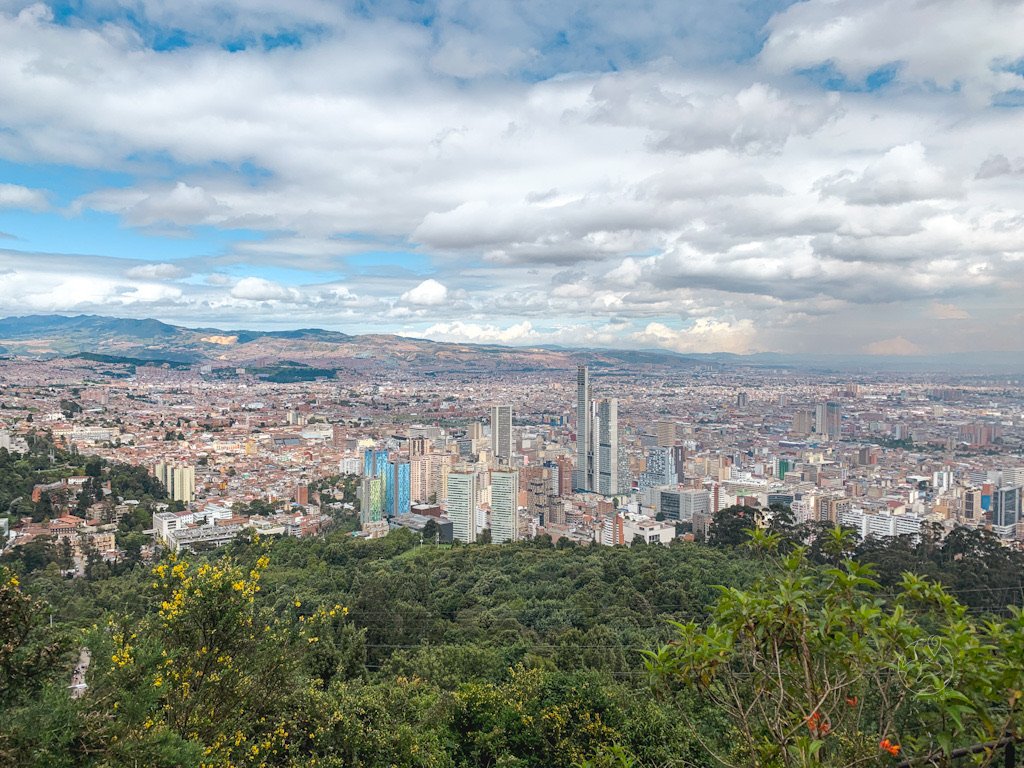Discovering the Mysteries of San Agustin
The mysterious monoliths of San Agustin
In the mountains of southern Colombia, where the Magdalena River begins and divides the Andes, archeologists discovered hundreds of intricately carved stone statues, monoliths and tombs - some more than 5,000 years old.
Little is known about the mysterious civilization responsible for creating them, but these fascinating sculptures reflect the life, vision of the world, and spirituality of these unknown people. We explored these figures along with the spectacular surrounding landscape over four days.
The path less travelled
The journey to San Agustin was a relatively simple one. We hopped on the back of a truck from Villavieja to Nieva, then on a direct bus to Pitalito, before transferring to another truck for the last hour. As I write that I realise my definition of a ‘simple’ journey has changed a lot in the last six weeks!
Tucked away in the southern reaches of Colombia lies the captivating town of San Agustín, an archaeological treasure trove shrouded in mist and mystery. Home to one of Latin America's most significant ancient civilizations, San Agustín's claim to fame lies in its collection stone sculptures and archaeological sites, scattered across the surrounding valleys. These stone monoliths, depicting anthropomorphic figures, zoomorphic creatures, and mythological beings, provide insight into the beliefs and customs of the ancient inhabitants who once thrived here.
San Agustin Archaeological Park
Our first stop was a visit to the San Agustín Archaeological Park to find out more about these mysterious peoples. Our day was a little delayed, as I insisted we watched England get the final runs they needed to win the third Ashes test before we set off… Graeme knew this about me before we got married, so I’m not even sorry!
Once Wood and Woakes had clawed England back into the series, we set off for our day of sightseeing. On our way in, we were told it was useless going in without a guide because we wouldn’t understand anything. Who told us this? A guide.
Funny that. I wasn’t against getting a guide but this man’s tone really annoyed me. I won’t understand anything? The cheek!
As with most places we visit, I had done a lot of reading about the site and the history before visiting, so I knew there was a detailed exhibition with English interpretation waiting on the other side of the entrance, and I also knew that whilst a lot of archaeologists and historians have theories on the monoliths, no one actually knows anything for certain about the civilisation that created them.
The Mysterious Statues
Over 500 statues have been found, spread over a large area, and they appear to have different functions: some were buried in tombs, others arranged as guards in ceremonial chambers, and some used as columns in buildings and structures. Every statue is unique. Although they have similar themes, the features, gestures, and positions vary from statue to statue. Researchers from across the world have studied them, each observing them through their own lens. They have been interpreted as many things: representations of sacrifices, gods, guardians of graves and supernatural entities that mediated between the world of humans and nature. But their true meaning and the intentions of the people who carved them will always be a mystery, lost to time.
It is quite nice to reflect on this whilst strolling through the park's verdant pathways and marvelling at the intricately carved statues. As people, we strive to know everything, but there is something quite magical about not knowing. We were free to walk around and feel the weight of history as we witnessed the mastery of this ancient craftsmanship.
Stunning Landscapes
At the far end of the park we came to Alto de los Ídolos and Alto de las Piedras, two hillsides adorned with more stone figures and ceremonial platforms, offering panoramic views of the lush landscape. As we climbed up we were met by an incredible rainstorm. It was a beautiful moment.
We opted for 5 days in San Agustín not only for the archaeological wonders but also to discover the surrounding natural beauty. The landscapes of rolling hills, lush valleys, and cascading waterfalls provide a perfect backdrop for outdoor adventures like horseback riding, hiking through the cloud forests to waterfalls, or kayaking on the Magdalena River. Unfortunately, our plans didn’t quite work out. We had arranged to join a jeep tour of the countryside… but our jeep never arrived. After getting our money back we took it as a sign and instead opted to end the Colombian leg of our journey by relaxing around town and at our gorgeous hotel.
Finca El Maco & San Agustin town
Finca El Maco is a working farm, and our room was in a little cabin in the farm’s grounds. Surrounded by nature and overlooking the green valley, it was the perfect place to rest a few days before our journey to the border and into Ecuador.
Finca El Maco
The town itself was a little frontier-type place - Wild West vibes! There were a lot of stray dogs, friendly but annoying when they followed us home. We found a little gem in Massala Cafe - a veggie cafe where we stopped for lunch a couple of times. They sold a range of spices and health foods, including Garam Masala homemade by the owner herself! We chatted to her and she told us about her travels through India, where she learnt how to mix spices for chai and other Indian recipes. For the second time that week, she was fascinated by my Indian heritage and could only respond to the news that my grandparents were from India by pointing to her skin with a look of realisation… I’m quite a fan of the reaction!
Our last proper stop in Colombia, we found San Agustin to be an off-the-beaten-path destination worth making the effort for.
Related Content














